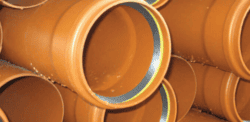Sewer repairs can be daunting due to the potential cost and disruption involved. Thankfully, there is a range of techniques that can reduce these. The right choice for you may depend on the type of sewer line pipes you have, which may involve an assessment. Let’s take a look at this and some of the materials used.
Pipe assessments
A pipe assessment may form part of repairs using sewer pipe lining Wolverhampton by companies such as wilkinson-env.co.uk/sewer-repairs-drain-lining-concrete-cutting/drain-repairs/drain-repairs-wolverhampton/. Knowing the type of piping you have is essential when it comes to repair or replacement options.
Types of sewer line piping materials include:
1. Plastic
These pipes offer resistance when tree roots affect them. They can also offer good flexibility and are typically a cost-effective option.
2. Clay
This is not a fashionable option, but some people still install clay pipes. They can be extremely resistant to chemical degradation; however, the porous surface can attract tree roots, and the material is hefty and hard to cut.
3. Cast-iron
Most plumbing companies do not install cast-iron pipes today, but they are not completely obsolete. Cast-iron pipes offer great internal strength and are resistant to high pressures. Another advantage is that they are non-flammable.
4. Galvanised steel
These can offer flexibility but are prone to corrosion and rust. Find out more about galvanised steel here.
5. Copper
Copper is easier, lighter and thinner than steel; what’s more, it is very durable. It is prone to corrosion and contamination, however, and repairs can be expensive.
- Orangeburg
These sewage pipes are made using wood fibres and are light, cost-effective and easy to cut, although they are not as popular as they once were.


